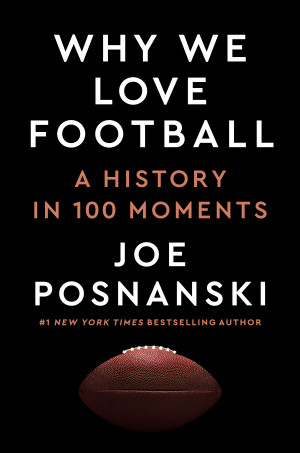Marty Glickman is a significant figure in the history of American Jewish athletes. He was an outstanding sprinter and football player during his time at James Madison High School in Brooklyn in the mid-1930s (and, later, at Syracuse University). Glickman means “lucky man” in Yiddish. Ironically, his major high school rival was Sid Luckman of Erasmus Hall High School, who went on to become a football star at Columbia University and then had a Hall of Fame career as quarterback of the Chicago Bears in the National Football League.
Before long, Glickman entered into the world of broadcasting. After World War II, in the broadcast booths of college and professional football, baseball, and basketball games, he became, to quote Jeffrey Gurock, “the premier voice of New York sports.” He mentored many of the most prominent New York City sports broadcasters, including Marv Albert, Len Berman, Dave Cohen, and Bob Costas. He also advised retired athletes, like John Brodie, Frank Gifford, and Bob Griese, in the art of broadcasting. In 1988, Fordham University hired him as an adjunct professor in its department of communications to teach a course on sportscasting.
Glickman’s fifteen minutes of fame took place at the Berlin Olympics in August 1936, when he and Sam Stoller — the only Jews on the American track-and-field team — were scratched from running in the 4×100 meter relay race. Historians have attributed this slight to antisemitism. Avery Brundage, the antisemitic Chicago businessman who headed the United States Olympic Committee, has received the brunt of the blame for this unseemly event.
Gurock’s brief biography of Glickman is out for bigger game than merely recounting the 1936 Olympics incident and Glickman’s athletic and broadcasting achievements. He also argues that Glickman was a second-generation American Jewish everyman, and his life was “archetypal of the life story of a whole generation of Jewish children of immigrants who came of age beginning in the 1920s.” Glickman rejected traditional Judaism and defined himself as a “cultural Jew.” He believed that it made more sense for America’s Jews to focus on the opportunities presented by their new homeland rather than on the obstacles. For Glickman and others of his generation, becoming part of the American mainstream required knowledge of and proficiency in the games played and enjoyed by a sports-crazed country. Indeed, the route to Americanization for New York City’s Jews led through Ebbets Field, the Polo Grounds, and Yankee Stadium. Glickman’s blessing was that he was able to play these games better than others.





